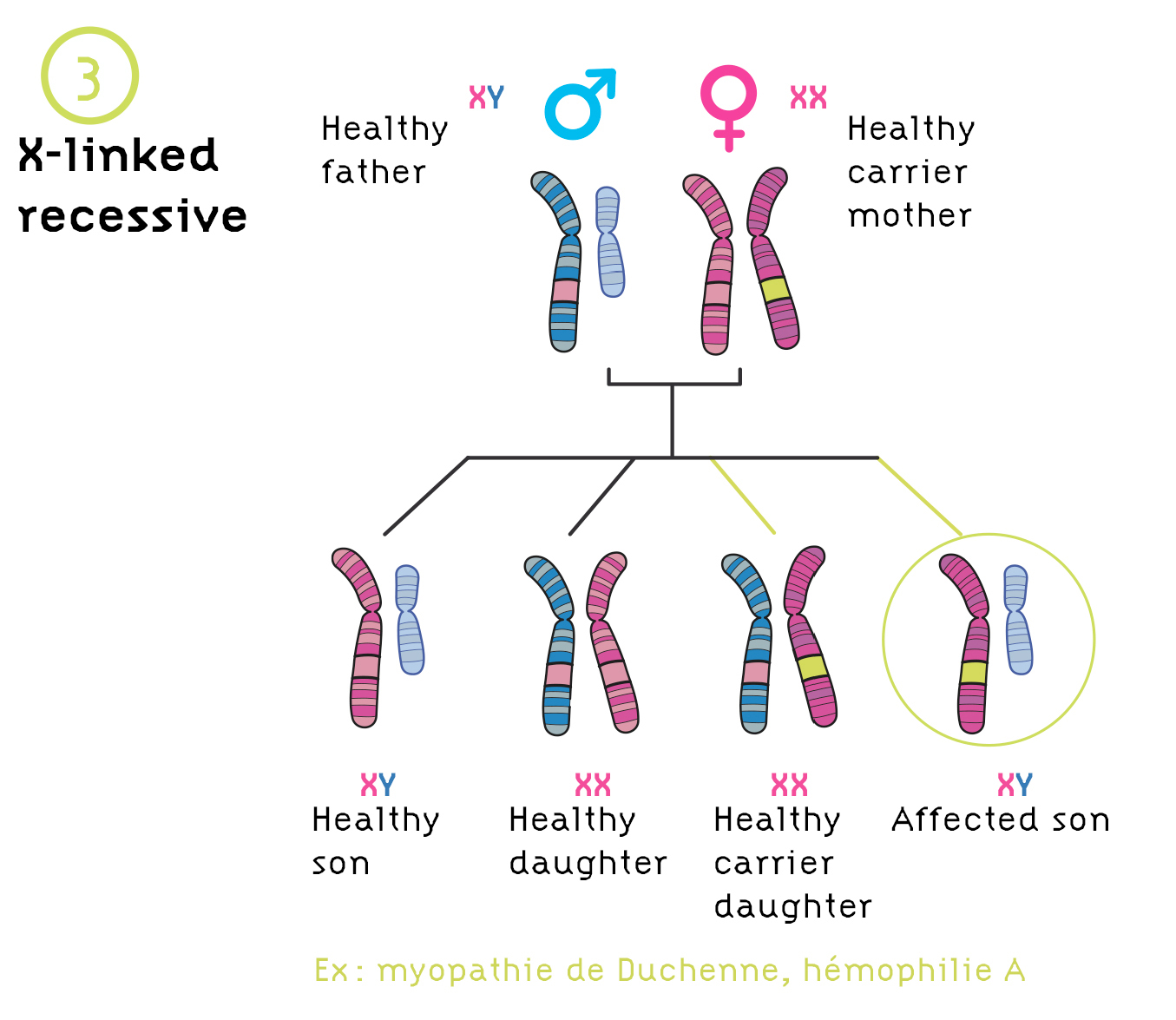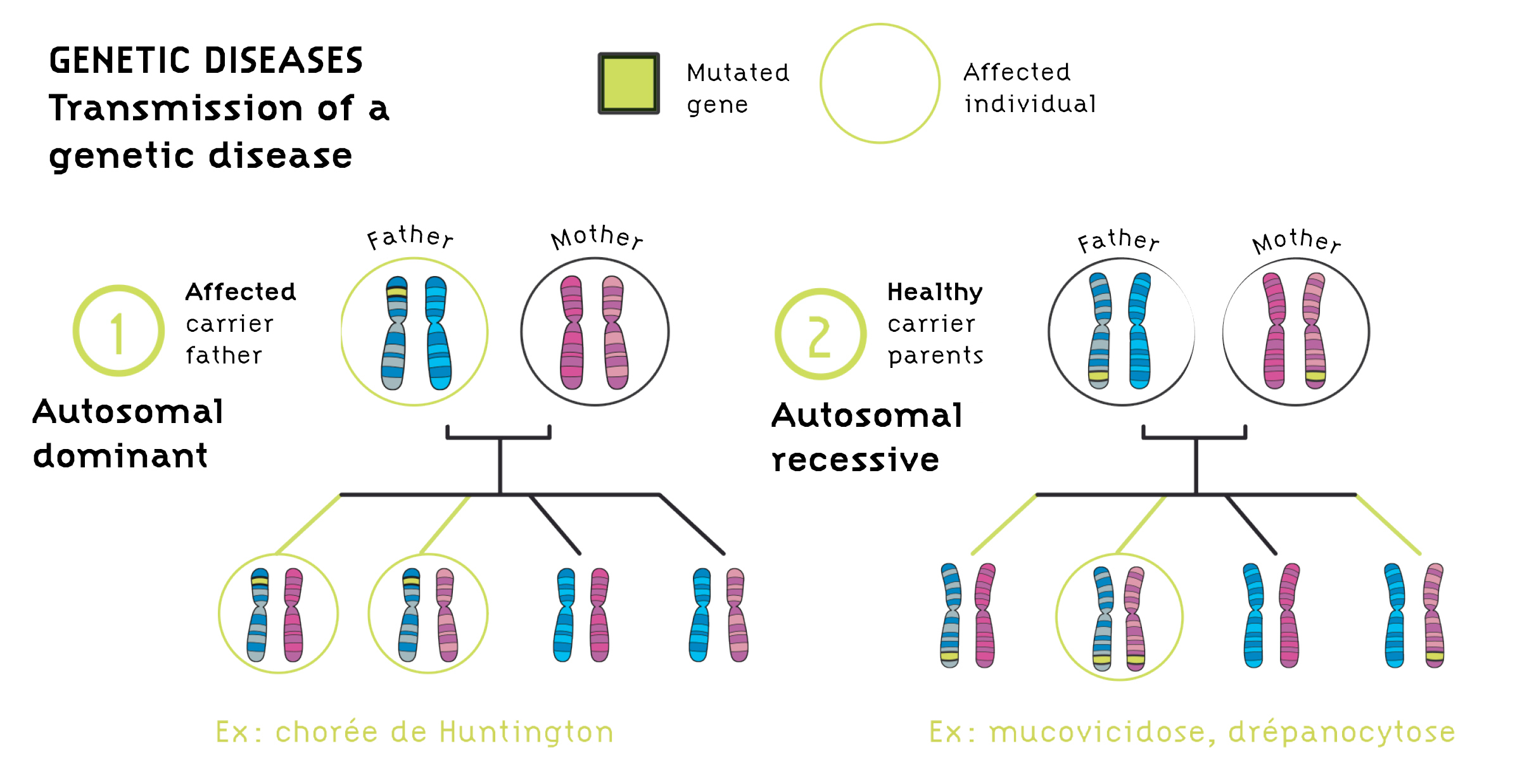When certain genes are defective, they may cause diseases which may be mild or serious; these are genetic disorders.
Each gene programs the production of a specific protein. If the gene is altered, the production of this protein is disturbed. It may be absent, or non-functional, for example. And it is this dysfunction of the protein which may cause a disease. These are what we call genetic diseases. They may be mild or severe and onset may be at any age. Thus both color-blindness and Duchenne muscular dystrophy are genetic diseases. By definition, all defective genes may be transmitted to our offspring.
- In dominant genetic diseases, a single allele (of the pair) is sufficient for the disease to appear. This is the case in Huntington’s disease, for example. In this example, if only one parent carries the defective gene, the children have a 50 percent chance of inheriting it.
 In recessive diseases, both alleles must be defective for the disease to appear. If both parents are carriers of the defective gene (in this case they are called healthy carriers, because they do not have the disease themselves), their children have a 1 in 4 chance of inheriting the disease. Examples of this type of inheritance are cystic fibrosis and sickle cell anemia.
In recessive diseases, both alleles must be defective for the disease to appear. If both parents are carriers of the defective gene (in this case they are called healthy carriers, because they do not have the disease themselves), their children have a 1 in 4 chance of inheriting the disease. Examples of this type of inheritance are cystic fibrosis and sickle cell anemia.- The only pair of chromosomes which do not contain the exact same types of information are the sex chromosomes. Females have two X chromosomes and males have one X chromosome and one Y chromosome. When the defective gene is situated on the X chromosome, it may cause an X-linked disease. Duchenne muscular dystrophy is an example of this type of inheritance.
- Some genetic diseases are caused by defects in genes found in the mitochondrial DNA; they are transmitted only via the ovum of the mother. The mitochondrion is a small organelle in the interior of the cell which transforms energy from the exterior which the cell can use a little like a miniature nuclear reactor. When it functions incorrectly it can cause a mitochondrial disease. Leber’s optic neuropathy is an example of this.
Note: Many diseases which are not totally genetic in origin may be due to a genetic predisposition in combination with environmental factors. The genetic mutation is then one of several risk factors; one can be a carrier of the gene but never develop the disease and vice versa. This is the case, for example, in several forms of breast cancer.


